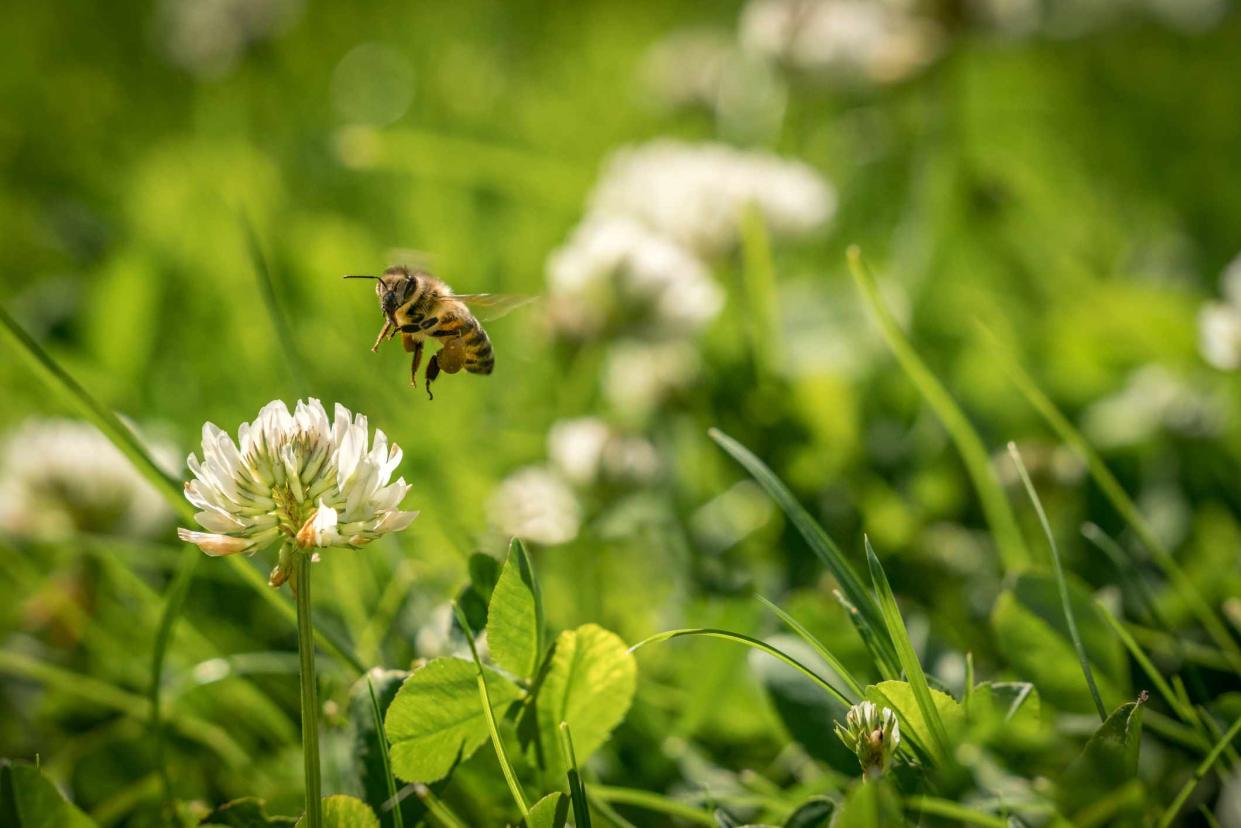This Low-Maintenance Lawn Trend Is Also Pollinator-Friendly

Perboge / Getty Images
Want to show a little love to your local bees with an easy-care lawn? You don’t have to keep bees to create an environment that helps them thrive. Bee lawns are a great way to improve the look and care of your yard while also helping bees.
Why should you want bees in your yard in the first place? Not only are you giving pollinators a place to find pollen, you’re also helping your garden—and other local plants—grow.
Bees can pollinate crops, garden plants, your ground cover, and even some kinds of trees. Contrary to popular belief, bees are actually quite friendly and unaggressive (it’s wasps that give stingers a bad rap). Your new neighbors won’t want to use their stingers on you, so it’s perfectly safe to have them in your yard.
Want more gardening tips? Sign up for our free gardening newsletter for our best-growing tips, troubleshooting hacks, and more!
Benefits of a Bee Lawn
There are even more benefits to a bee lawn than just caring for the hard-working pollinators themselves. Bee lawns are typically low-maintenance; if you want a yard that doesn’t need much trimming, watering, or work, bee lawns are for you.
Bee lawns utilize ground covers to create an appealing environment for bees. You may have already seen a few types of ground covers attracting bees in your area before, and white clover is one of the most common ground covers that is also useful for a bee lawn. It’s soft, pretty, has a pleasant green element to help fill in non-grassy areas, and has small white flowers that bloom with plenty of nectar for bees to enjoy.
The Best Plants for a Bee Lawn
When you create your bee lawn, you’ll want to use a mix of ground covers and grasses that can cover your yard while also blooming consistently throughout the spring and summer. The plants you choose will depend on your area; you’ll want to opt for bee-attracting plants that suit your planting zone (and even better if they’re native).
If you are planning on mowing your lawn occasionally, you may want to choose ground covers that bloom quickly and don’t mind a cutting every once in a while. Hoping to avoid mowing as much as possible? Low ground covers that don’t grow endlessly like grass does can help.
You don’t even need to cover your entire backyard with a bee lawn in order to help your neighborhood pollinators. Just a small section (bordered, if you don’t want it to spread to the rest of your grass) will be enough to keep honeybees happy.
If you’d rather keep bees away from outdoor dining areas, creating a border can also help. This will also benefit them by giving them an area of your yard that they can use without disturbance (or the threat of being stepped on). Especially if you attract ground bees that nest under the dirt, you’ll want to avoid stepping on their homes—they won’t sting, but they will appreciate being left alone.
If you want to upgrade your bee lawn even more, adding flowering plants that are appealing to bees can create a gorgeous visual for a garden or bordered lawn. This will also have the added benefit of attracting a few extra pollinators to your yard.
Read Next: 6 Ways to Be More Sustainable in Your Garden This Year, According to Pros
Read the original article on The Spruce.

